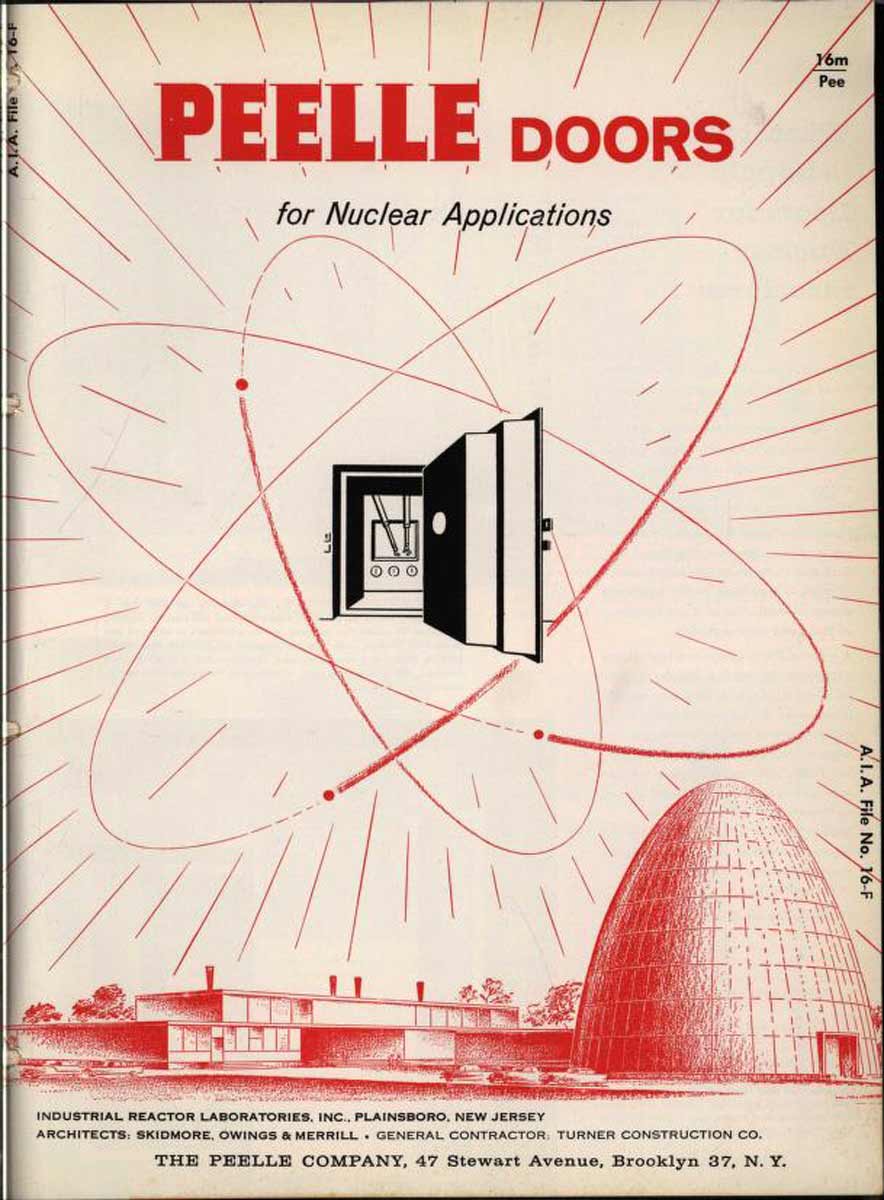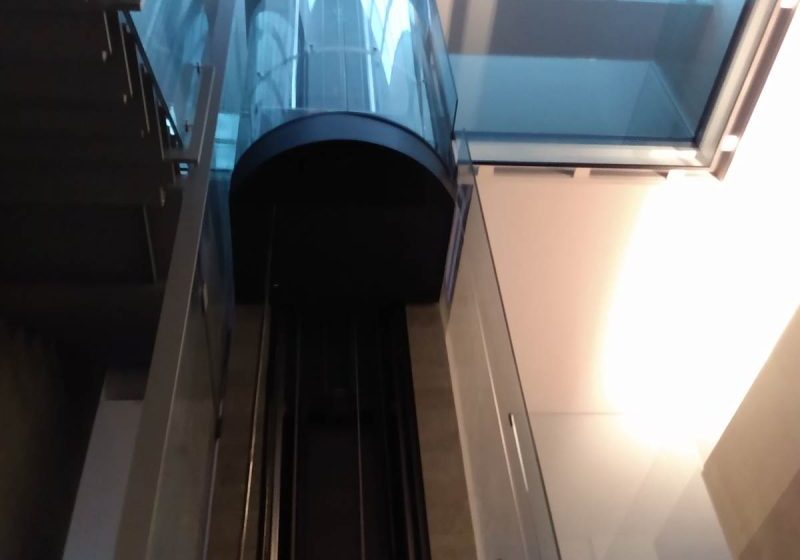Mad Men and Beyond
Jun 1, 2022

Peelle freight elevator door marketing through the years
The Peelle Co. established its position in the elevator industry in the late 19th century. While most members of the elevator community are familiar with Peelle and its products — particularly its vertical slide door for freight elevators — the history of how the vertical slide freight elevator door has been marketed through the years is less familiar. In this article, your author explores Peelle freight elevator door marketing through the past century up to the present day.
In the Beginning
Along with the early 1960s, popularized in the television show Mad Men, the early 1900s are said to be a “golden age” of advertising. For the first time, advertisers were invited into our homes and workplaces. Companies were able to speak directly to potential customers. Advertisements became a part of our culture. The sole purpose of advertising was to sell. No matter the character used, the story told or type of product promoted, advertisers’ only goal was to attract customers, i.e., sell more products.
The elevator industry customer was focused on building design and construction products. Elevators allowed people and freight to be transported throughout a building vertically. Buildings were getting taller and more iconic. As cities grew, people looked up at these modern structures. The Peelle door was like many elevator products of the late 19th century and early 20th century: new, interesting, purposeful and fulfilling a need. Peelle established its niche in these modern structures. Specifically, the company emphasized that personnel needed to be protected from elevator openings and buildings needed to be protected from potential fire hazards. Peelle vertical slide freight elevator doors provide this protection.
In Peelle’s early marketing, it was common for the company to identify the buildings furnished with Peelle doors and the architect who specified them. This approach legitimized the early adopters of the vertical slide door. Since NYC was the largest city in North America, it served as a model for the use of freight elevators in other cities as they began to grow. Peelle officially incorporated in NYC in 1905. It was common for Peelle employees to have personal relationships with building owners and facilities managers, from industrialists to retailers.
When designing buildings, architects required many vertical freight elevator door options and panel configurations. Each elevator was considered part of the overall design. Therefore, it warranted a high level of attention. Architects made the freight elevator door design decision, unlike today, where the elevator consultants and/or general contractors assume that responsibility. Additionally, freight elevator and Peelle doors are considered more utilitarian today and are installed in non-public locations to facilitate freight movement. While the design of Peelle doors has remained essentially the same over the years, it has been simplified and standardized to follow safety and code directives.






Industrialization
The freight elevator allowed manufacturing facilities and assembly lines to operate vertically. Unique freight elevator solutions began to find their niche in parking garages, retail stores, breweries, power plants and routine, and not so routine, manufacturing workplaces.
Architectural Record ads show the importance of explaining to an architect the value of a Peelle door, which is unnecessary today and most likely the responsibility of the installation elevator contractor or elevator manufacturer. As elevators became more common, they were recognized as stable, established products with proven value. They did not need this value resold for every installation. Peelle marketing focused on the features and benefits of the vertical door as it was reaching a wider audience and its application was becoming more routine.
Maturing
The internet changed the way of connecting with an audience. Banner and pop-up ads were and remain as popular as social media. Consumer spending shifts changed the way that advertisers approach their audiences. Instead of focusing only on selling products, advertisers began building brand awareness and trust. Advertisers connected differently and were reaching a younger and more informed audience. Rather than taking a transactional approach, advertisers began to offer solutions to problems to which audiences were likely to relate.
As the Peelle product matured, marketing shifted from individual products to brand maintenance and how the vertical door differs from the horizontal door to reinforce the value of freight elevators furnished with Peelle doors. Peelle was faced with significant changes within its customer base: Long-term elevator professionals with a lifetime of experience and familiarity with Peelle doors were joined by newer elevator professionals with little or no experience with true freight elevators, or vertical slide Peelle doors.
Marketing and social media posts of true freight elevators were focused on those applications with mainstream, broad audience appeal. An example is Barclays Center in Brooklyn, NY, which has elevators that carry sports team buses, personal vehicles (to people’s condominiums), unique applications, etc.
Only in markets outside of North America and Europe, China and the U.A.E. is it necessary to associate the vertical door with a freight elevator as the best solution to transport items, as the vertical door is less common than multipanel, horizontal sliding doors currently furnished in those markets.
Today
Consumers are as picky about the brands they purchase as they are about the friends with whom they associate. A brand reflects their own image, as well as their social and political beliefs.
Advertisers must focus on proving their brand authenticity, trustworthiness and value, providing useful information and solutions, rather than just products and services.
Consumers trust other consumers; it is vital for a brand to build a community of loyal followers who will promote the brand on their behalf. Social media is, therefore, critical to a brand’s image. Peelle and its employees maintain a website, as well as LinkedIn, Facebook and Instagram accounts.
Freight elevators are being repurposed from one owner/operation to multiple tenants using a freight elevator in the same building. Many freight elevators with Peelle doors are still in service after 60 years and in need of modernization. Marketing Peelle vertical slide doors today focuses on what Peelle can do for the elevator contractor to help them succeed from a sales, installation and maintenance perspective. Many of the present-day advertisements do not include a picture of the vertical door, nor do they explain its features or benefits. The Peelle door, however, is recognized as an integral part of any true freight elevator.
Social media platforms, such as LinkedIn and Instagram, have a younger audience that relies on these mediums for information. On these platforms, one finds Peelle posts that demonstrate the vertical slide door’s value, as well as how the vertical slide door differs from the horizonal-slide door.
Recently, Peelle created a mascot, “Freight Man,” to refresh its brand in a fun way. In 1905, that would have been unnecessary.




Get more of Elevator World. Sign up for our free e-newsletter.









